
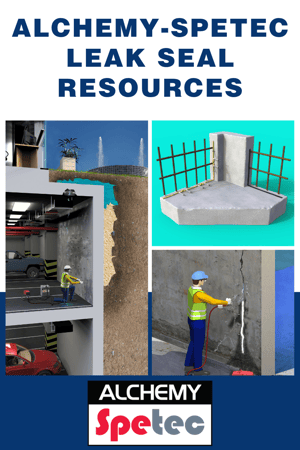 Leaking concrete can be detrimental to safety and property values. The products offered by Alchemy-Spetec deliver the ultimate solution for hairline cracks, gushing leaks and other waterstop issues.
Leaking concrete can be detrimental to safety and property values. The products offered by Alchemy-Spetec deliver the ultimate solution for hairline cracks, gushing leaks and other waterstop issues.
Sealing Leaks with Concrete Crack Injection
Concrete starts decaying immediately after it cures. Even brand new construction can require leak seal follow up work. Older concrete structures are even more susceptible. Leaks through concrete are generally going to be through cracks, joints, and honeycomb (areas in poured concrete of mainly course aggregate with voids in between). Depending on water volume and pressure, and the size of the joint or crack, you are going to encounter weeping leaks, steady leaks, and gushing leaks. These leaks can be sealed with crack injection resin.
Stopping Multiple Leaks with Curtain Wall Grouting
Curtain wall grouting is often required when cracks cannot be identified, when the walls are made of material that does not respond well to crack injection (such as masonry, stone and CMU), and when previous leak seal methods have failed. Curtain wall grouting is the process of injecting water reactive resin behind the leaking wall in a grid pattern. The water on the other side mixes with the grout and cures to a solid mass covering
the surface of the wall on the other side.
Waterstop
Newly constructed floor/wall joints with no waterstop lining can be vulnerable to water infiltration. When designers and builders neglect to line the joints, water can seep into the structure and out onto the floor. Needless to say, water on the floor can be an inconvenience, it can be a safety hazard, and it can damage property. In addition, floor/wall joint leaks can cause the concrete to decay and spall over the long run. Alchemy-Spetec offers a variety of waterstop solutions.





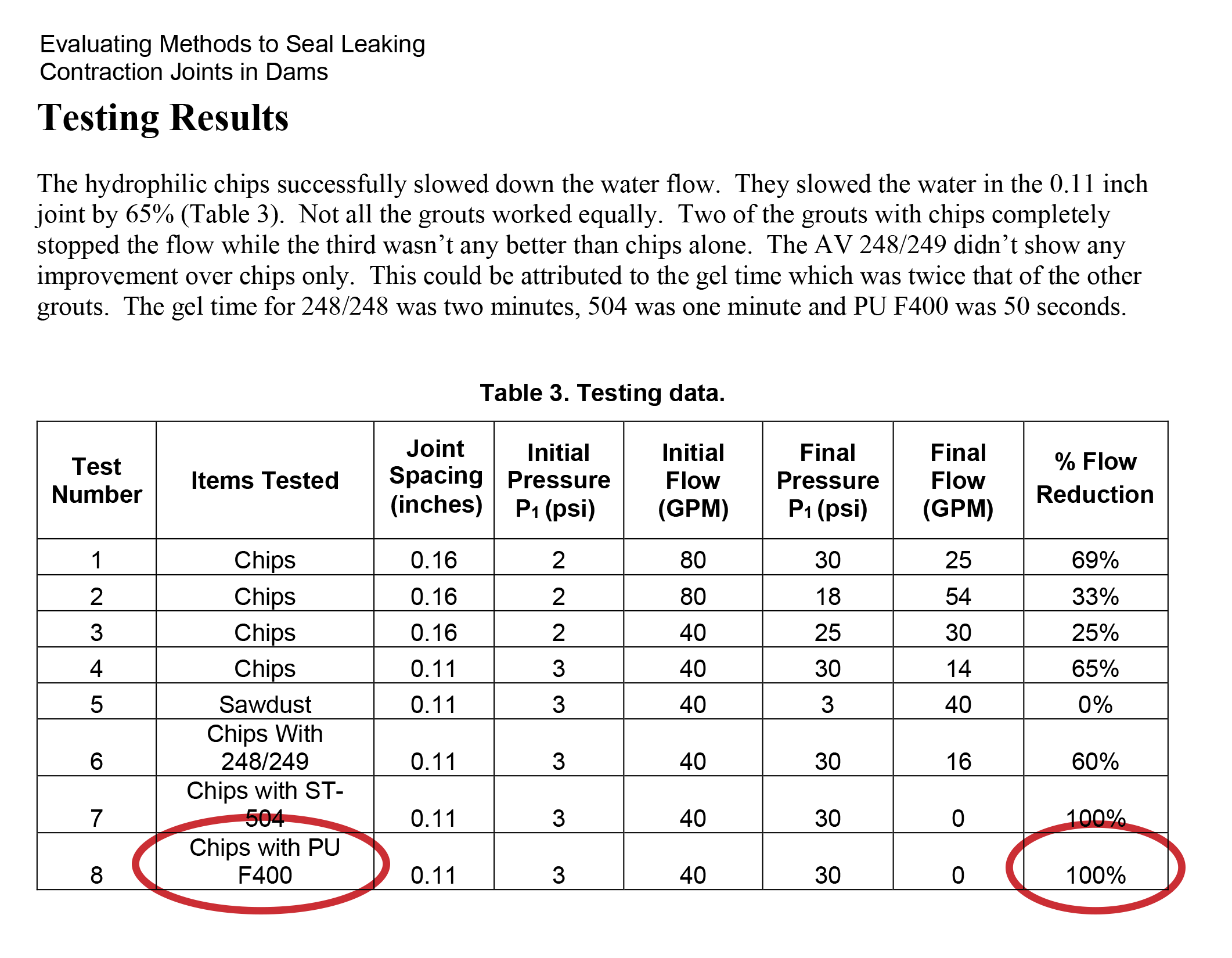
.png?width=1400&name=Copy%20of%20Use%20the%20High%20Pressure%20F-Valve%20Assembly%20For%20Twin%20Streaming%20(1).png)
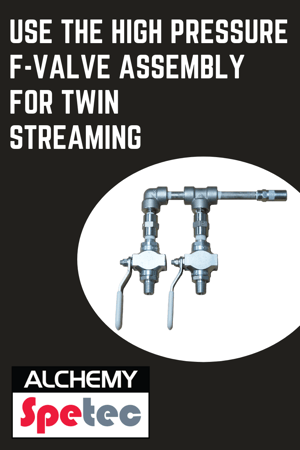 We've blogged about this before, but it's worth repeating. Twin streaming is a technique in which you use a high pressure 3,000 psi F-valve to inject resin AND water at the same time. As you can see in the photo, the F-valve has two supply connections - one for water and one for resin. The water and resin come into contact before they exit the coupler.
We've blogged about this before, but it's worth repeating. Twin streaming is a technique in which you use a high pressure 3,000 psi F-valve to inject resin AND water at the same time. As you can see in the photo, the F-valve has two supply connections - one for water and one for resin. The water and resin come into contact before they exit the coupler. .png?width=1400&name=Copy%20of%20Working%20on%20Dams%20and%20Locks%20with%20Spetec%20Leak%20Seal%20Resins%20(1).png)
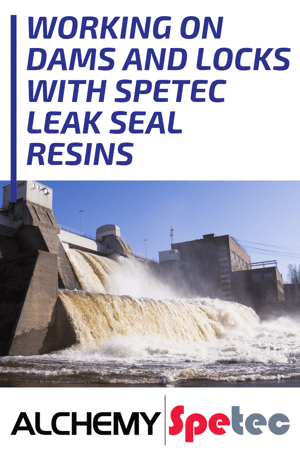 In a structure that holds water, you need something flexible to inject into cracks or joints. These types of structures are usually above ground and exposed to changing temperatures. As concrete heats up during the day it expands; joints and cracks squeeze together. As it cools, the concrete shrinks and joints and cracks open up. Thus, you need an injection foam that has flexibility to handle the movement. You also need to do the injection work in the early hours of the day. Some contractors have injected cracks in the afternoon; stopping leaks, only to find them leaking again in the morning.
In a structure that holds water, you need something flexible to inject into cracks or joints. These types of structures are usually above ground and exposed to changing temperatures. As concrete heats up during the day it expands; joints and cracks squeeze together. As it cools, the concrete shrinks and joints and cracks open up. Thus, you need an injection foam that has flexibility to handle the movement. You also need to do the injection work in the early hours of the day. Some contractors have injected cracks in the afternoon; stopping leaks, only to find them leaking again in the morning. .png?width=1400&name=Leak%20Seal%20Solutions%20for%20Municipalities%20(1).png)
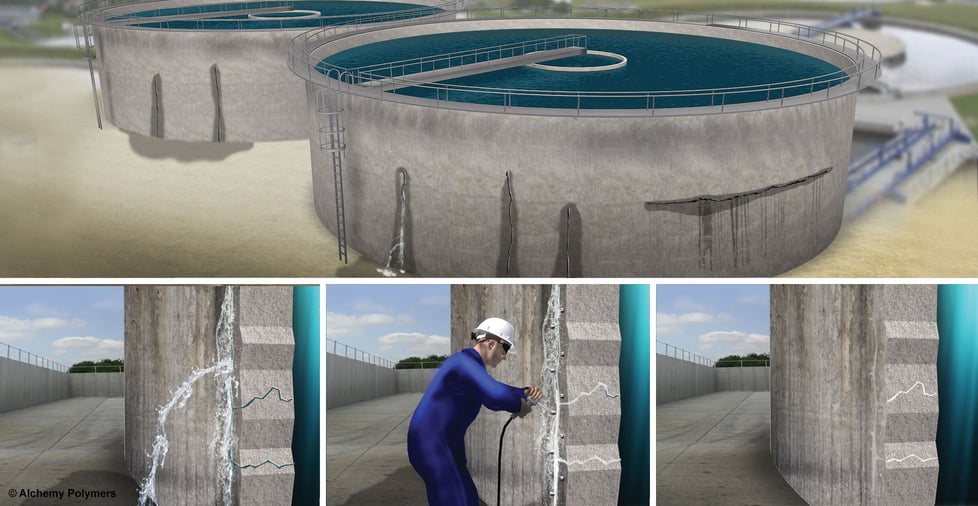
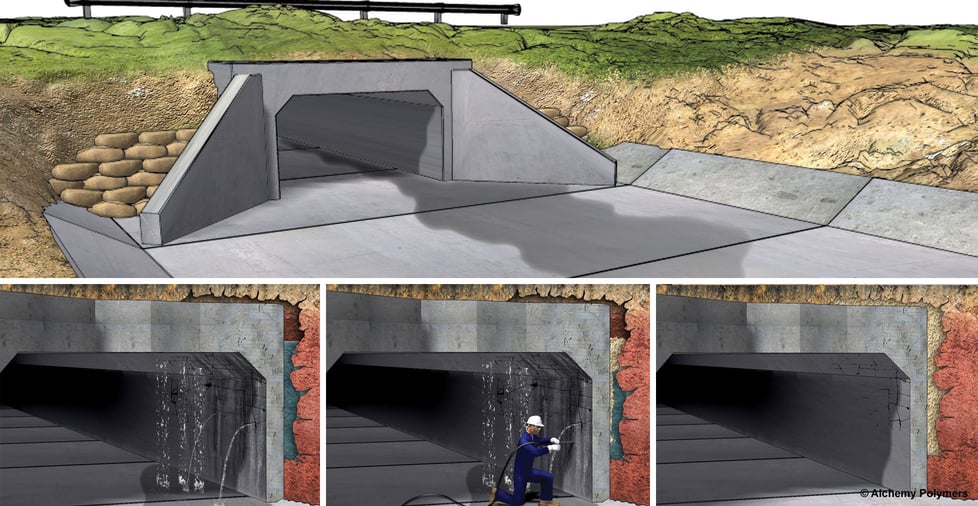
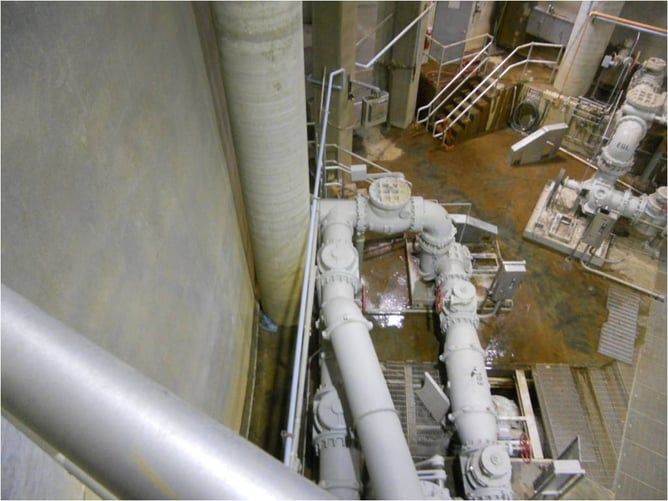
.png?width=1400&name=Copy%20of%20Spetec%20PUR%20GT500%20-%20_That%20Stuff%20is%20Magic_%20(1).png)


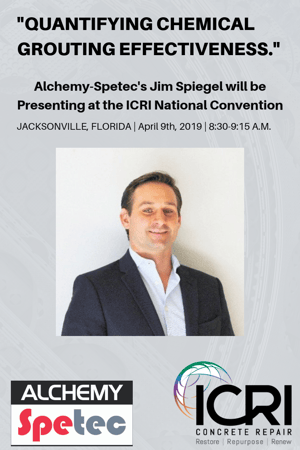 Alchemy-Spetec's Jim Spiegel will be presenting at the ICRI National Convention at the Omni Jacksonville Hotel on Tuesday, April 9th, 2019 from 8:30-9:15am. The topic of the technical session will be,
Alchemy-Spetec's Jim Spiegel will be presenting at the ICRI National Convention at the Omni Jacksonville Hotel on Tuesday, April 9th, 2019 from 8:30-9:15am. The topic of the technical session will be,







